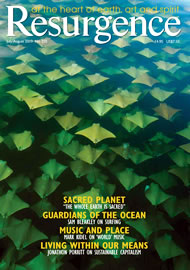Sacred landscapes are not only found in remote places, preserved by ancient local communities or Indigenous peoples. In diverse regions of Europe, sacred landscapes and seascapes have for millennia been part of our heritage. Prior to the Neolithic period, most cultural landscapes in Europe were permeated by religious meaning connected to the sacredness of Nature. The Roman historian Tacitus wrote in the first century CE: “The Germans do not consider it consistent with the grandeur of celestial beings to confine the gods within walls, or to liken them to the form of any human countenance. They ...
There are approximately 785 more words in this article.
To read the rest of this article, please buy this issue, or join the Resurgence Trust. As a member you will receive access to the complete archive of magazines from May 1966.
If you are already a member, please Sign in







